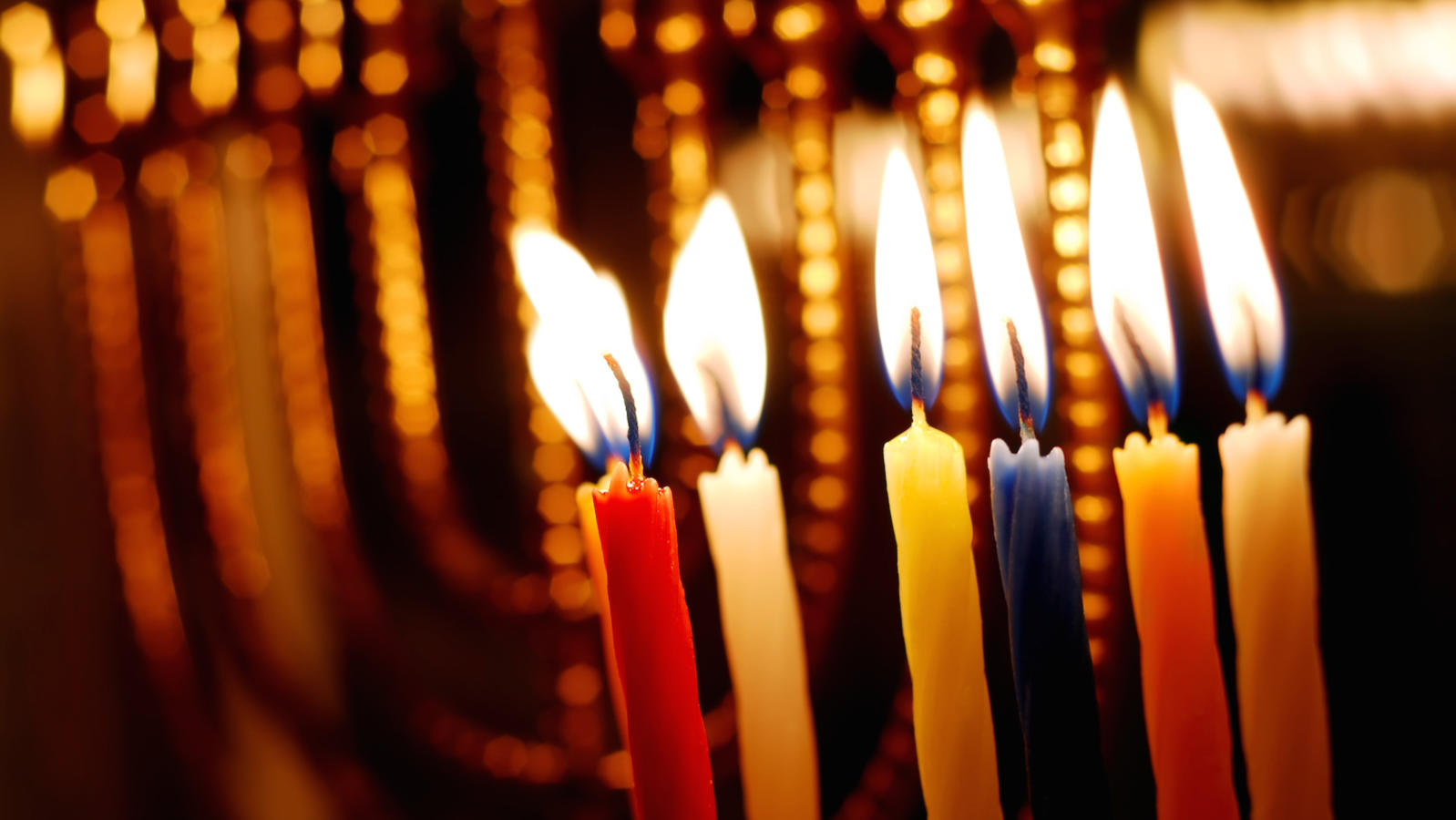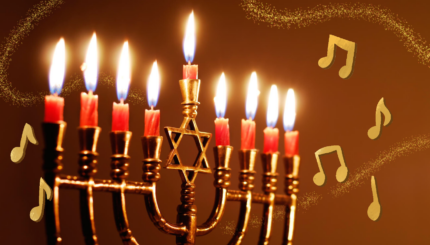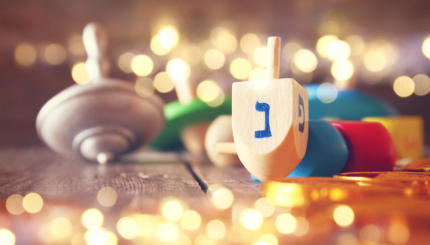One of the great joys of Hanukkah is the beauty of the Hanukkah menorah, aglow with light. The menorah is a many-layered symbol. For some, it evokes the miracle of the Hanukkah legend; for others, the ancient rituals of the Temple. For others still, the menorah, like the Christmas tree, is a symbol of the Divine feminine–derived, also like the Christmas tree, from pre-monotheistic sacred trees, adorned with light in the time of nature’s greatest darkness.
Apart from all of these symbolic meanings, though, simply admiring the menorah is a beautiful sensory experience. And like all such experiences, it is an opportunity for mindfulness of the body to provide a pause in the ceaseless march of the mind. This is how the spiritual search is actually a cessation of searching–for in spiritual practice, it is possible to let the soul rest.
Seeing Meditation
How to put these ideas into practice? “Seeing Meditation” is one way. Seeing Meditation is a very subtle practice, not because it is difficult to see, but because it is so easy. Our eyes automatically register light and color, and the brain’s processing is so speedy as to be utterly invisible to us. If you are looking at a book, you see “book,” not white, black, light and shadow. Not even a book; probably you just see words. And not even words; rather, you immediately absorb ideas, leaving physicality behind.
This is actually much more than seeing. It is seeing, recognizing, processing, comprehending. But seeing is itself a subtle sensual pleasure, and in deeply concentrated mind states, when the mind moves slowly enough that it can interrupt even basic cognitive processes, it is possible to experience pure seeing without the cognitive apparatus of categorization. This, perhaps, is similar to what the kabbalist Abraham Abulafia described as the world without language: perception without categorization, substance without quite so much form. A blade of grass is not grass, but “green”–and not even “green,” but rather, a dozen gradations of light and dark hues, like the movements of an analog clock which defy the compartmentalization of the digital.
With your help, My Jewish Learning can provide endless opportunities for learning, connection and discovery.
When you’re ill, or tired, it’s easy to simply gaze out into space, perfectly satisfied with the most mundane shapes and forms. But Hanukkah provides an opportunity to practice “Seeing Meditation” without the tissues and chicken soup. After you light the Hanukkah candles and finish the blessings, sit still for a minute in silence. Keep the body still, and notice the exquisite calm of stillness, with only the breath rising and passing away. As thoughts arise, just let them go on their way. After a few minutes, being sure to keep the body in stillness, let the eyes open, and let the gaze rest wherever it falls.
See if you can notice the mind grabbing and labeling–car, rock, table, tree–and just step back a bit to the naked seeing of color and light itself. It’s a bit like staring, except your attention and focus are more refined, not less. Try to keep your gaze steady for a period of time, not forcing too hard, but seeing with your body, instead of with your mind, letting the physical act of seeing take precedence over the mental acts of recognition.
A Simple Pleasure
That’s it really–one of life’s simple pleasures. See what happens when you try it. You might just relax; the rushing is over, there’s nothing else to do–and here you are, basking in the simple beauty of the Hanukkah candlelight. Maybe you can feel that delightful satisfaction of the truly rich person–the one who is happy with her share of the world. Just seeing–just that simple pleasure. Or you might find that the simple act of seeing makes space for holiness to be experienced, rather than merely invoked. After all, what is the difference between hearing “everything is holy” and actually feeling it? Nothing about the world–nothing changes with enlightenment. But everything about the readiness of the mind to receive it.
Sometimes this eye-opening can be transcendent, reminding us of timeless truths or the Infinite itself. Other times, it can be even greater: an opening to the Immanent, to the physicality of sight and its object, to the exquisite sensuality of the real.
Explore Hanukkah’s history, global traditions, food and more with My Jewish Learning’s “All About Hanukkah” email series. Sign up to take a journey through Hanukkah and go deeper into the Festival of Lights.
Hanukkah
Pronounced: KHAH-nuh-kah, also ha-new-KAH, an eight-day festival commemorating the Maccabees' victory over the Greeks and subsequent rededication of the temple. Falls in the Hebrew month of Kislev, which usually corresponds with December.
menorah
Pronounced: muh-NOHR-uh, Origin: Hebrew, a lamp or candelabra, often used to refer to the Hanukkah menorah, or Hanukkiah.



